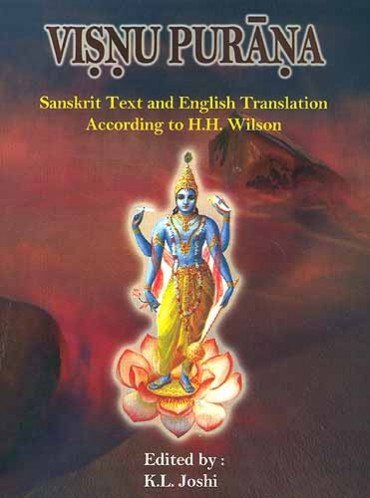The Vishnu Purana
by Horace Hayman Wilson | 1840 | 287,946 words | ISBN-10: 8171102127
The English translation of the Vishnu Purana. This is a primary sacred text of the Vaishnava branch of Hinduism. It is one of the eighteen greater Puranas, a branch of sacred Vedic literature which was first committed to writing during the first millennium of the common era. Like most of the other Puranas, this is a complete narrative from the cr...
Chapter XVI - Dynasty of Turvasu
Parāśara said:—
I shall now summarily give you an account of the descendants of Turvasu.
The son of Turvasu was Vahni[1]; his son was Gobānu[2]; his son was Traiśāmba[3]; his son was Karandhama; his son was Marutta. Marutta had no children, and he therefore adopted Duṣyanta, of the family of Puru; by which the line of Turvasu merged into that of Puru[4]. This took place in consequence of the malediction denounced on his son by Yayāti[5].
Footnotes and references:
[1]:
Varga: Agni.
[2]:
Bhānumat: Bhāgavata, which also inserts Bhaga before him.
[3]:
Tribhānu: Vāyu. Triśānu: Brāhma. Traiśāli: Agni. Triśāri: Matsya.
[4]:
Besides Bharata, who, as will be hereafter seen, was the son of Duṣyanta, the Vāyu, Matsya, Agni, and Brāhma Purāṇas enumerate several descendants in this line, for the purpose evidently of introducing, as the posterity of Turvasu, the nations of the south of India: the series is Varuttha, (Karutthama, Brāhma), Āndīra (Ākrīra, Brāhma); whose sons are Pāṇḍya, Karṇāṭa, Chola, Kerala; the Hari V. adds Kola, and the Agni very incorrectly Gandhāra.
[5]:
The curse alluded to is the failure of his line (Prajāsamucceda), denounced upon Turvasu as the punishment of refusing to take his father's infirmities upon him (see p. 414). He was also sentenced to rule over savages and barbarians, Mlecchas, or people not Hindus. The Mahābhārata adds that the Yavanas sprang from Turvasu. As sovereign of the southeast, he should be the ancestor of the people of Arracan, Ava, &c.; but the authorities cited in the preceding note refer the nations of the Peninsula to him, and consequently consider them as Mlecchas. Manu also places the Drāviras or Tamuls amongst Mlecchas; and these and similar passages indicate a period prior to the introduction of Hinduism into the south of India.
